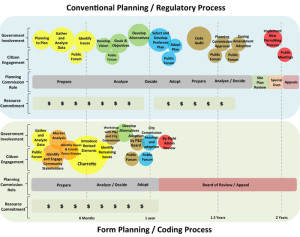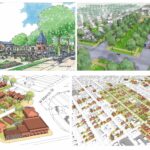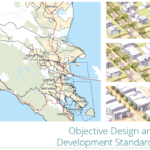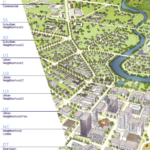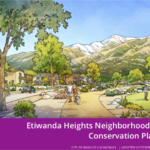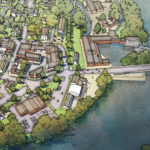Benefits of Form-based Planning and Coding
Originally published in Better! Cities & Towns February 2015
This article is intended to provoke a discussion about what may be the next frontier for placemaking: The transformation of the movement into a more broadly applicable model for community planning. To start, I offer a limited narrative explaining the graphic below presented as the principal object of attention (please click on image for full view).
The placemaking movement has incorporated key urbanism principles into policy and practice. This shift has transformed practice by recognizing the vital importance of development regulations and demonstrating that form-based codes can be used to assure that desirable change occurs. Recognition of local or regional “place” outcomes, and how to achieve them with form-based codes, has moved into the planning/design mainstream.
Despite this advance, we face challenges in achieving consistently good and predictable outcomes. These challenges are grounded in the present system—particularly in the elements outlined below:
Time—public master plans take a long time to create and are often seen as shelf items and zoning ordinances are often not updated until several years after the plan is prepared or updated;
Money— many, if not most, municipalities do not have the necessary financial resources to prepare a high quality master plan and zoning ordinance, let alone one that focuses on form and character elements previously ignored. Existing staff may have little knowledge, experience, or interest in tackling such a task; Staff, time, and personnel resources are inadequate;
Public involvement—depending on one’s role, there seems to be either too many public meetings, or not enough opportunity for public input, or both and because the time frame is so long, the public gets “worn out” long before adoption and when implementation begins;
Complexity—unless you have been or currently are a professional in the development industry or municipal government, the “process” seems complicated and difficult to understand;
Predictability—despite best efforts to manage the system, projects often do not achieve approval as proposed, even at times when all major stakeholders support them;
Outcome(s)—most people would agree that the results (i.e., on the ground development) being produced by the system are not consistent with what citizens may envision or support in their local plans.
Perhaps now is the time to reevaluate the current systemic approach to planning—that is, what we have come to accept as the standard planning/regulatory/entitlement/permitting system practiced in communities today.
To this end, the graphic is proffered for review and comment. This graphic compares a generalized ‘conventional’ planning/regulatory/entitlement/permitting process to what could develop if form-orientation were to be incorporated directly into a joint master planning/zoning process itself.
This graphic contains a large amount of information spanning five areas: (1) government involvement; (2) citizen engagement; (3) the role of the planning commission; (4) resource commitment; and (5) the time periods of operation of the four areas. The elements of the conventional planning/zoning/entitlement/permitting process are presented on the top half. In the bottom half, the present form-based code development process is appended in two key ways:
Master planning tasks are incorporated into the process “front-end.” The preparation/outreach/engagement activities that are critical for development of form-based codes can also play the same role for obtaining consensus on the community’s vision, goals, objectives, and the “form” of future land use(s).
A by-right entitlement/administrative permitting function is incorporated into the process “back-end.” Such changes would provide the ability to reduce or even eliminate the site plan reviewing process for projects where design and use dimensions fall within the established code form parameters, among other requirements.
Juxtaposition of the processes reveals some clear distinctions. The conventional process is needlessly redundant and duplicates the prepare/analyze/decide steps for master planning and code analysis. Under a stakeholder-engaged charrette-structured process, it appears that the process redundancy is eliminated. Moreover, the planning commission role could return to its historic roots as (1) plan/code writer, and (2) administrative review board.
Furthermore, assuming steps are taken to solicit and actively engage all stakeholders (including citizens both individually and in groups), the consensus developed for planning goals, objectives, and future use(s) may also include consensus on the form of said objectives, goals, and future use(s). The basis is then established for simultaneous coding and moving entitlement/permitting to the by-right/administrative structure as depicted in the lower half of the graphic.
The comparison also reveals that while more intensive studies are undertaken—including market analyses—the form-oriented process can reduce the time required to update a community’s master plan. By combining formerly separate (but similar) stakeholder/engagement process structures, redundancy is eliminated and improved production for time spent is achieved. And, of course, the time savings translate to resource savings based on the typical hourly rate calculation.
Considering the system issues identified above, we can conclude that movement to a “form”-oriented model would have the following effects:
- A reduction in time needed for master plan revision or update;
- A corresponding reduction in resources needed to fund the process;
- Reduced staff time required for process support – both in plan/code preparation and entitlement/permitting – would provide increased time for other important tasks;
- An appropriate amount/intensity of public involvement, at the correct time(s), would support the obtainment of input and consensus while allowing the system to function at optimal efficiency for relevant individuals and groups;
- The process offers a veritable opportunity to demonstrate predictability for all parties – both at the onset and in the continuity of process;
Because the process plans, codes, and then sets permitting based on the form identified by consensus, the community’s desired outcome(s) is realized at all stages, and consistency with the form-based outcome(s) is the metric by which the process is organized and measured.
Again, this article is intended to open a dialogue, anticipating that some (or many) readers may have questions or comments. These are appreciated and requested. We have the opportunity to advance the form-based movement toward its next evolution of adaptation and adoption. We have already recognized the importance and benefit of form coding our neighborhoods and communities in order to achieve the outcome of better placemaking. Imagine the benefit achieved if we can incorporate form to become standard community planning model?

